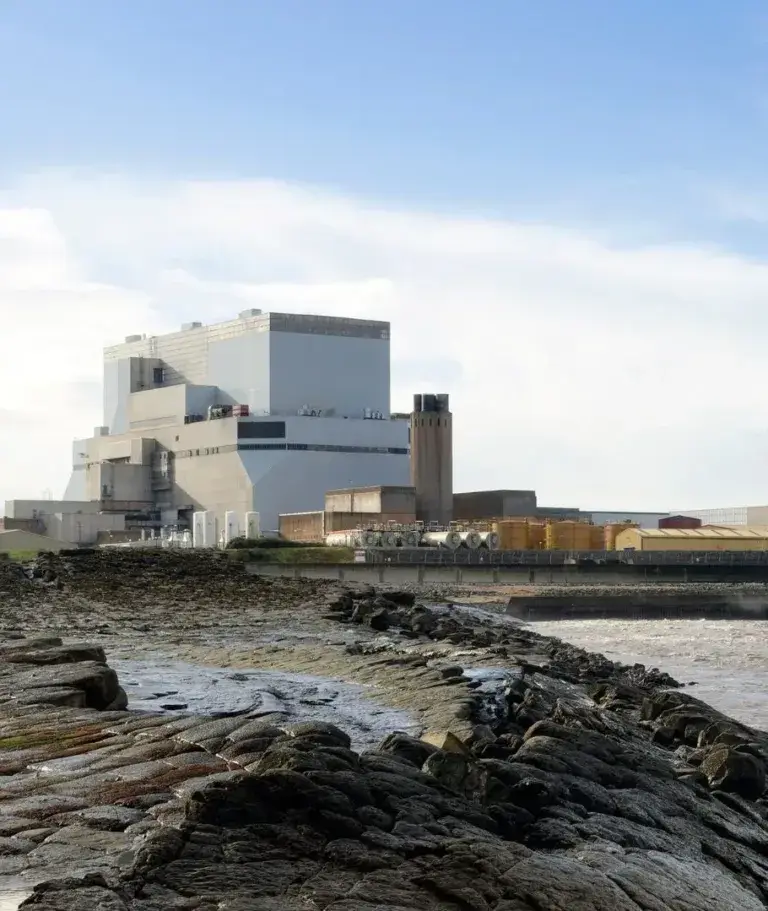There has been a recent upsurge in interest in the Acoustic Fish Deterrent after a consultation was launched by EDF to remove the necessary environmental protection.
This mini-site provides information on the system, and it's need at Hinkley Point C. The article below is an example of this interest.
“Fish Guidance Systems is unimpressed at EDF’s change of direction, saying it was like building wind turbines that would kill millions of birds and offering to build a nature reserve next door.”
Hinkley Point C and the Acoustic Fish Deterrent
Hinkley Point C is the first of a new generation of nuclear power stations in the UK. The plant is due to open in June 2031 and will cost in excess of £31bn.
It will account for 7% of the country’s electricity supply, providing power to around six million homes and offsetting nine million tonnes of carbon dioxide each year.
Part of the current plans for the extensive cooling facilities at Hinkley Point C, which will draw water from the Severn Estuary, the UK’s largest estuary and designated special area of conservation, is to install an Acoustic Fish Deterrent (AFD) to prevent 182 million fish per year being killed.
The AFD will guide fish away from the plant’s water intakes to protect them from harm. EDF is currently planning to remove this necessary environmental protection due to unfounded concerns on noise, access, and cost
'Final' decision already made by government to install AFD
In September 2022, an appeal to remove the AFD from the plant by EDF was rejected by the Department of Business, Energy and Industrial Strategy. This is the last recourse for EDF with the exception of a judicial review.
In their report, which can be found here, they stated:

“The Secretary of State considers that the migratory species have been declining, are considered in a poor state and that even low-level impacts on a population at risk can be significant. He also considers that the marine stocks are in a poor or vulnerable state and that impacts of the scale indicated by the… [removal of the AFD] would have a potential material effect on these stocks.”
Environmental Permitting Regulations 2016 Appeal by NNB Generating Company (HPC) Ltd Removal of acoustic fish deterrent conditions from Water Discharge Activity (WDA) Permit
The quick facts on AFD claims
- The AFD would not be heard from the shore (36.5db at 2 miles away and up to 20 metres underwater.)
- The AFD was tested in Hartlepool and local seal populations were monitored with no affect on their behavior (AFD sounds at 1,000hz, peak range of sea mammal hearing is 20,000hz.)
- The nature reserve is a worthwhile environmental addition if done right, but would not stop a single of the 182 million fish killed with out the AFD from dying.
- ROV systems are evolving enormously at the moment. The capabilities for navigation in challenging conditions have improved markedly over the last few years. These include things like improved navigation in very low visibility, onshore control, advanced navigation software, more ROV power and manipulators with greater control and accuracy to carry out work tasks.

What can an Acoustic Fish Deterrent (AFD) achieve?
As the AFD forms part of the Development Consent Order, which has been approved and reaffirmed multiple times, for Hinkley Point C.
The Government, The Welsh Government, and a Public Inquiry have all stated that the AFD will play an essential role in protecting marine life and must be installed. Without it, environmental organisations believe as many as 500,000 fish could be sucked into the intake each day.
An effective screening system comprises of a fish return system with an AFD as it accounts for a wide range of factors, including:
- Differences in hearing sensitivities of the fish that are at risk
- Differences in handling sensitivities of the fish drawn into the intake
- The ability to operate and monitor the system remotely
- The potential for fish stocks to change over the lifespan of the plant
- A safe maintenance process that protects divers and other operatives
Fish Guidance Systems provided statements given at the public inquiry of June 8th 2022, Dr David Lambert, Managing Director of Fish Guidance Systems and Dr Andy Turnpenny, fish biologist gave a presentation on the requirements of an AFD to be included in the DCO for the proposed nuclear plant. To view their full statements, please follow the link below.
Hinkley Point C and the Severn Estuary
FGS has been developing sound-based behavioural fish protection systems for more than 25 years.
These are backed by scientific research and multiple trials to assess effectiveness and environmental impact. The type proposed for Hinkley Point C uses a Sound Projector Array, a system of underwater speakers which produce a repellent sound gradient to block intakes.
Species such as Atlantic salmon and twaite shad, which are abundant in the Severn Estuary and of high conservation importance, have responded particularly well to existing AFDs.

Our Latest Acoustic Fish Deterrent News

Overview of the Environment Agency’s Response to EDF’s Plans to Remove AFD from Hinkley Point C
In early June, The Environment Agency provided a response to the Hinkley Point C Development Consent Order Material Change consultation. The Environment Agency mission is to ensure that Hinkley Point C (HPC) operates to high environmental standards and states that it will continue to engage with EDF to achieve this.

The Benefits of Using Acoustic Fish Deterrents at Nuclear Power Plants: Insights from Doel Nuclear Power Station
Acoustic Fish Deterrent systems have been used at coastal power plants for nearly thirty years. Operated by Electrabel,the Doel Nuclear Power Station, situated on the River Scheldt near Antwerp, Belgium, comprises four pressurised water reactors (PWRs) with varying capacities. The Acoustic Fish Deterrent (AFD) system is installed exclusively on the

An Assessment of Replacing the Acoustic Fish Deterrent (AFD) with a Nature Reserve at Hinkley Point C
The debate surrounding the potential removal of the Acoustic Fish Deterrent (AFD) at Hinkley Point C raises significant environmental concerns. In its consultation early this year, EDF Energy, the operator of Hinkley Point C suggested replacing the AFD, an essential and governmentally mandated technology, with a salt marsh. This suggestion

Exclusion of Welsh Councils from Hinkley Point C Consultation
The latest consultation on the development of Hinkley Point C, the nuclear power station project in Somerset, has notably excluded several Welsh Councils from its list of consultees. This comes despite Cardiff’s proximity to the site, which is less than 20 miles away. EDF, the French owned company behind Hinkley